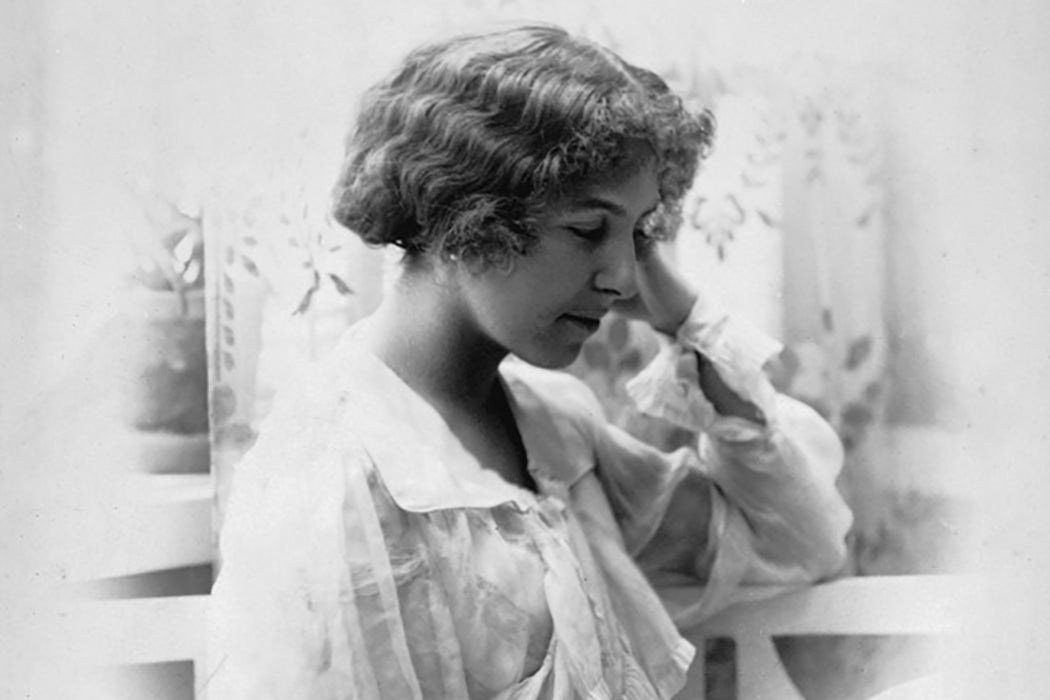Karen Blixen, author of Out of Africa (1937) and Babette’s Feast (1958), wrote dozens of works, including short stories, poems, plays, and essays. According to her biographer Donald Hannah, Blixen’s attitude to life shaped her work. The characters in her books are stylized to their roles because accepting one’s role in life is key to finding purpose. This is apparent from her earliest writing.
Blixen began writing as a child. She told Hannah that she and her siblings acted out some of her work, like The Marionette Plays. One of them in particular, Sandhedens Hoevn (Revenge of the Truth, published in 1926), shows that Blixen was preoccupied with the idea of fate and a person’s role in life from an early age. In the story, the plot turns the children into marionettes. Then a witch casts a spell so that “any lie they tell eventually becomes the truth.” Unable to escape their given role, the characters have to accept their new reality and make the best of it. In her autobiography Out of Africa, Blixen applied this idea to herself.
Although Blixen sometimes wrote under a pseudonym, Isak Dinesen being her most frequent choice, she wrote Out of Africa as Karen Blixen. The book was her memory of the seventeen years she lived in Africa as coffee plantation owner Baroness Karen Blixen-Finecke. For those years, Blixen’s role in life changed.
It began in late 1913 when the 28-year-old boarded a ship in Denmark. She arrived in Mombasa in January 1914, and married her betrothed, the Swedish Baron Bror Blixen-Finecke, the very same day. The role of Baroness, landowner and plantation owner meant she was responsible for staff, harvests, finances, social activities, and more. These responsibilities became part of her purpose in life. But very soon after her marriage, she was diagnosed with syphilis. Painful mercury treatments and surgeries followed. The plantation suffered bad harvests and financial problems. To deal with the peaks and troughs of her new role, Blixen turned to her writing. In Out of Africa, she wrote, “I began in the evenings to write stories, fairy-tales and romances, that would take my mind a long way off, to other countries and times.”
By 1931 she had lost everything—marriage, hope of children, love, land, work, and money—and left Kenya to live with her widowed mother in Denmark. It was a particularly difficult time for her. Hannah explained that Blixen believed suffering to be part of life and refused to be consumed by it. Instead, she carried on exploring the connection of role and purpose in her writing. In 1933 she published Seven Gothic Tales under the pseudonym Isak Dinesen, and in 1937 she published Out of Africa.
Role, purpose, fate, and destiny are intertwined in Blixen’s work. In Hannah’s reading, she was trying to unravel the marionette strings that keep people from finding a clear sense of purpose. In this way she hoped to help others. Babette, in Babette’s Feast (published in Anecdotes of Destiny, 1958), also uses her role to help others. Refusing to speak of past sorrow, she shrugs her shoulders and says “It is Fate.” Suffering brings her to the remote island, but through her role as cook she finds purpose in helping others. She brings them food, but also grace.
In Sorrow Acre (published in Winter’s Tales, 1942), Adam has difficulty understanding how people can accept their fate. He finally sums up Blixen’s attitude to life when he says “…so is man one with his destiny, and he shall love it as himself.”
Perhaps the clearest example is Blixen’s own explanation in Out of Africa: “the proud man find[s] his happiness in the fulfillment of his fate.”







